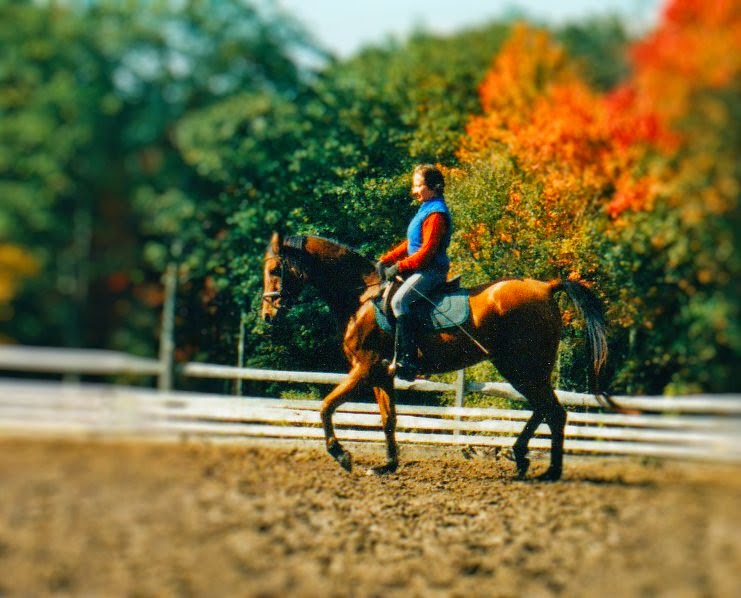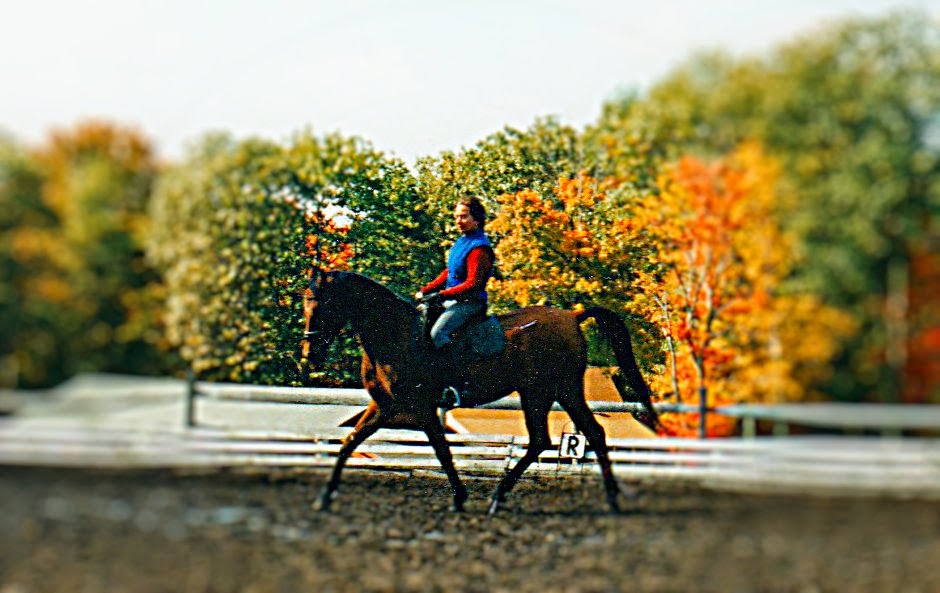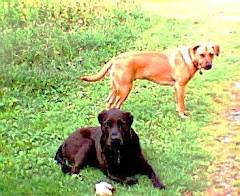Back in 2003 I visited a pet shop in search of a canary. The canaries there looked in terrible shape -- really beyond salvation. And then toward the back of the store I stumbled upon a pair of Fischer's love birds. Totally out of place, they were a young breeding pair that had been accidentally shipped to the wrong address. They appeared in excellent health and so I brought them home to rescue them before they succumbed to their poor environment.
Opening the box I brought them home in revealed a poignant moment, with the pair huddled in a corner in terror, the male covering his mate with his wing as he attempted to hide and protect her. I named them Peaches and Papaya, and set them up in a large, private cage flanked by an aviary of finches on one side and a large cage with a small mixed flock with 2 cockatiels, a peachfaced love bird and a sun conure on the other. There they came to feel some security in a quiet home surrounded by other birds. In the evening, they joined the mixed flock in free-fly time, returning to their cage by themselves at bedtime.
In 2005 they surprised me with an egg, but we were totally unprepared and their baby didn't make it past the first day. About 6 months later, I had set everybody up for their free fly time; as I was readying the room, I remember seeing Peaches hopping up and down on the perch in front of her door, ready to go. I headed to the kitchen to fix my dinner. Just a moment or two later, Domingo the sun conure started shrieking. As I ran back into the bird room I realized I had forgotten to actually let the birds out. I found all the birds in the mixed flock cage staring toward the bottom of the cage next door, Domingo still shrieking. And I saw Papaya staring at the floor of his cage. And there I found Peaches, already dead.
Egg yolk peritonitis is a silent killer. My vet had told me some years ago, after I lost Lady Di, my canary caruso's mate, that there is no way to predict it and no way to prevent it. It is also swift and the hen doesn't seem to suffer at all. I actually watched one of my zebra finches die from it. One moment she was flying around perfectly happy. The next dying on the floor of her cage. That day I crossed the room in 3 rushed steps, only to feel her final heartbeat as I picked her up. So I am assured that at least our beautiful Peaches didn't suffer.
The same cannot be said of those left behind, and it was totally heart wrenching to watch Papaya's forlorn, lonely figure as I removed Peaches' body. I tried moving him into the mixed flock. The established pairs retreated to corners, leaving Papaya staring sadly at his empty cage. I moved him back, but not before he escaped and flew wildly and blindly around the house, crashing into windows and walls.
Haunted by the image of his bereft figure, alone in the middle of his cage, I spent the night online looking for a female Fischer's love bird for sale. The only ones I could find were in California -- there was no way I would fly a baby bird across country. Many babies die that way; personally I think it is a criminal practice. The next day I hit the phones and found a recently weaned, likely female, handfed peachfaced lovebird available a 2 1/2 hour drive to my north. Not an ideal match: peachfaces are slightly larger and much more rambunctious than the quieter, more timid and delicate Fischer's. But looking at sad, likely suicidal Papaya, it was worth a shot.
I drove 5 hours to pick up the youngster, and moved her in with Papaya. She went right up to him and poked him hello. He flew away to a corner. She didn't follow, but stood her ground and studied him with head cocked. She seemed to understand something serious was wrong and changed her approach. She quieted down and just let him be. They started out sharing a perch, but with a good distance between them. Over the course of 3 days, she slowly moved closer to him on the perch. By day 3, they were right next to each other and she gently poked him. This time he stood his ground and by day 4 they were grooming each other and beginning to bond. I named her Sage, both for her dilute, mossy green color, and her innate wisdom. Since 2005, they have been a bonded pair. Not nearly as close as he was with Peaches -- that could never be -- but Papaya was content. Circumstances had changed after we moved to Maine, Sushi and Saki the cockatiels crossed the rainbow bridge, and I moved Papaya and Sage in with Domingo and Joey, my elderly peachface lovebird. (Joey passed a couple years ago at the ripe old age of 15.)
This past winter, I lost my supply of breeding quality avian vitamins. While searching for a new supplier, I was forced to use a less-high quality vitamin. I believe this led to Papaya's death. His lack of a key nutrient became overt a few weeks ago when his tail feathers disappeared. At first I blamed overly-playful Sage, who also pulls Domingo's tail, and moved Papaya into a hospital cage with the intent of getting him fortified plumage vitamins as soon as I could find a new supplier. But in the private cage, a couple weeks later more feathers disappeared and I realized he was pulling out his own feathers. Then I found him very weak this past Friday evening and he was gone before morning.
Sage and Domingo now share the mixed flock cage. Papaya now lies next to Bennie. I dream of him at long last returned to his soul mate, Peaches, at long last, over the Rainbow Bridge, his citrus-colored feathers restored to their full beauty, both of them flying free and fearless.
Sunday, May 22, 2011
Sunday, May 1, 2011
Sustainable Hope
For some reason I was unable to post this entry. And then I lost internet service for a spell. Finally everything is back to normal, so at long last more than just a title!
Every so often when I’m at rock bottom, I get a snippet of news that brings me hope. One recent snippet came in the form of an ad in the local weekly for a week-long series of workshops on sustainability held at nearby Round Top Farm. By chance it was held on my week off and I planned to attend every evening. Unfortunately I caught a cold the first evening and so missed several of the workshops I wanted to attend. I did learn a lot from the few I made it to.
First on my agenda was Deep Energy Retrofit, which was offered by an energy auditor, Al Heath, who retrofitted an older, partially insulated 1,000 square foot ranch (which is now offered for sale). Al’s goal was to reduce energy use in that house by 75%. He exceeded his goal, spending about $22K (not including some $4500 in tax rebates) with an anticipated ROI of 7 years.
There are essentially three types of heat loss: conduction, convection and radiation. Conductive loss (where your “R” values fit in” accounts for 40-60% of a home’s heat loss. Convection (air movement) accounts for 30-40%, and radiant loss (mostly out windows) totals 2-5%. It makes sense, then, to attack conductive and convection loss first.
Your house can’t be too tight. It can, however, be under-ventilated. Most houses do not have lack of ventilation as a problem. Sealing up leaks is the first order of business; it is pointless to insulate if your house if full of leaks. The primary source of leaks can be closed up relatively easily:
- · The “sole plate” (where the foundation meets the wall) and “rim joint” (the top of the wall) combined lose 25% of your heat
- · Wall outlets, which can be plugged inexpensively with gadgets from your local hardware store), account for 20% of heat loss!
- · The duct system loses 14% of your heat
- · Windows lose 12% total, including radiant, convection and conduction
Once you have plugged up your leaks – and to find them all you are best off hiring an energy auditor – then you can turn to insulation. The general rule of thumb is to start with the attic, then the basement and finally the rest of the house.
Unfinished basements or crawl spaces should have a moisture barrier put on the ground and up the walls. Otherwise, your insulation will end up covered with mold and your wood may rot. Compare the square footage of the walls versus the floor. If you are insulating a porch or deck with a small footprint that was turned into a room, it *may* be less costly to insulate under the floor. Most of the time, however, the smaller square footage will be the walls unless they are very tall. An effective moisture barrier is something called EPDM rubber – rolled roofing paper.
Al was joined by an Insulator “Itchy” Charley Huntingdon of “Itchy Scratchy Insulation,” who described 3 types of insulation: fiberglass, dense pack cellulose, and foam. The high end is foam, but it is also very expensive. Foam comes in two types: open cell and closed cell. The auditor prefers open cell, which is less toxic. The insulator prefers closed cell, which has more toxic chemicals that need to “gas off” for a few days before the house is closed up, but which are less prone to water damage. The open cell type can absorb water and get moldy. At least here in Maine, the foam will need to be covered, usually with a special fire retardant paint that costs about half as much as the foam.
The best value insulation is dense packed cellulose, which will hopefully be produced locally in Maine in the not too distance future. It recycles used newspapers and is blown into walls (if they don’t already have fiberglass in them) using high pressure to pack it down tight. Installed in the attic, the cellulose will pack down over time. 16” equals R50; 24” equals R80. Fiberglass is the cheapest insulation and less effective than the other two, but still better than no insulation.
For 95% information (and 5% sales pitch) on energy retrofitting, visit coldclimatehome.com.
Next up: Interior Storm Windows
Subscribe to:
Posts (Atom)




